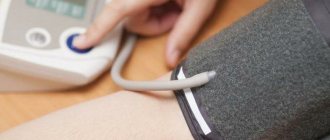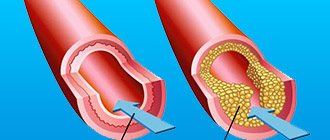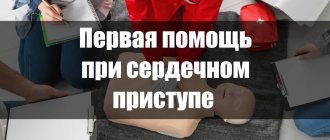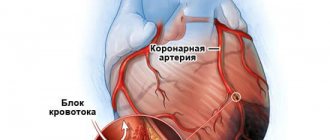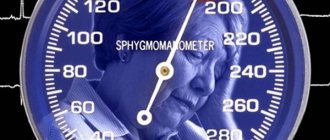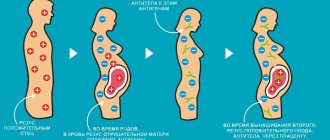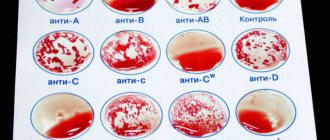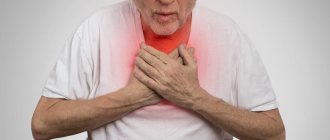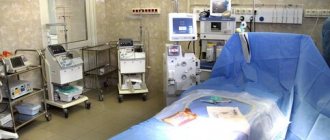Anonymously
Around the clock
Heroin belongs to the group of hard drugs and is addictive after 1-2 doses. This is a psychological and physical addiction that causes severe withdrawal symptoms (withdrawal syndrome). Drug addicts often overdose, which leads to death (if you don’t call an ambulance in time).
The active substance first appeared on the pharmacological market in 1898. The German pharmaceutical giant Bayer AG produced an antitussive based on this substance. Production ceased after 15 years due to the fact that the drug was highly addictive. Heroin was converted to morphine as it passed through the liver. Because of this, people developed withdrawal symptoms if they stopped using the medicine.
Currently, heroin is banned throughout the world. The active ingredient is extracted from poppy plants and is actively sold on the black market. In Russia, for the sale of heroin, a prison sentence of 15-20 years is provided. A visually inexperienced person will never distinguish morphine or heroin from other drugs. It is white in color and in rare cases brown or black.
Once ingested, brain function is disrupted and immunity is reduced. One dose is enough to develop dependence on a physical and psychological level. In this case, it does not matter how the substance enters the body. It is added to smoking mixtures, inhaled or injected (which often leads to infection and gangrene).
Signs of heroin use
When administered intravenously, the effect appears within one minute, and sometimes within 10-15 minutes. If the substance is added to a smoking mixture, euphoria occurs after 15-25 minutes. Once it enters the brain, it is converted into morphine. Therefore, a person feels perfect - all problems disappear, a feeling of limitless strength appears, and a pain-relieving effect occurs. The thing is that diacetylmorphine particles have a lot in common in structure with endorphin, which leads to a lift in mood and boundless happiness. Gradually, the amount of endorphins reaches enormous values, which leads to the opposite effect. Therefore, the first sign of use is panic attacks, suspiciousness and anxiety, sudden mood swings.
Fact: heroin negatively affects the central nervous system, so gradually nerve cells die and are not restored.
There are 9 signs by which you can easily identify a heroin addiction:
- Complete lack of emotion on the face. There is no facial expression, the facial muscles become exhausted and sag (the face changes).
- Eyelids and face turn red. Initially only after taking a dose, and then even in a normal state.
- Behavior is unstable. Happiness and euphoria are easily replaced by aggression and severe depression.
- The body itches and the person scratches constantly. This often happens to drug addicts with less than one year of experience.
- The eyes do not react to bright light because the pupils are constantly constricted. Often drug addicts use special drops to dilate the pupils to get rid of this effect.
- Saliva thickens and accumulates around the mouth. This is caused by the feeling of thirst. The substance leads to severe dehydration, so you constantly want to drink.
- Lost appetite. A person reaches for simple carbohydrates - buns, cookies, chocolates, sweets (to make up for the energy deficit). This leads to diseases of the gastrointestinal tract.
- Pale skin and numerous injection marks on the arms and legs. Bruises and dark spots often appear (if the injections are done incorrectly and the injection area is not treated with alcohol).
- The voice becomes rough and speech slow. Opiates have a destructive effect on the vocal cords.
At the same time, a person’s environment changes dramatically. He often changes jobs, spends time in, and rarely sees his family.
How to detect a heart attack
Causes
Chest pain does not always indicate the development of a heart attack; it often occurs with arrhythmia, a sharp increase in blood pressure, and in patients with coronary artery disease. The cause of the attack is associated with insufficient oxygen supply, decreased blood supply to the myocardium, or thrombosis of a large vessel. Atherosclerosis is often a predisposing factor to its development. In older people, cardiac dysfunction is associated with age-related dysfunction of the cardiovascular system.
Provoke the development of an attack:
- diabetes;
- taking non-steroidal drugs for a long time;
- increased body weight and metabolic disorders;
- smoking, alcohol abuse.
Each condition is characterized by its own symptoms and manifestations.
How does a heart attack manifest?
A myocardial attack occurs suddenly or develops gradually. It is characterized by symptoms:
- pain in the heart area, in the center of the chest or in the left half. The pain has varying degrees of severity, can increase in intensity, and last more than 10-20 minutes. Feels like a feeling of fullness, burning, compression;
- feeling of discomfort in the jaw, face, neck, shoulder on the left;
- shortness of breath, difficulty breathing, inability to take a deep breath.
In addition to the characteristic signs, symptoms such as headache, dizziness, chills, sweating on the face, nausea or vomiting are also observed.
Symptoms have some differences by gender and sometimes take atypical forms. In men, a few hours before the development of the pathological condition, heartburn, belching, and nausea may appear. With such symptoms, cardiac dysfunction is often regarded as food poisoning or an exacerbation of gastrointestinal diseases. An attack can also manifest itself as wheezing, coughing, or increasing respiratory failure.
In women, neurological symptoms are more common. Coronary syndrome is masked by constant fatigue, increasing weakness, and sleep disturbances. Blurred vision, unsteadiness when walking, tingling in the arms and legs appear.
In some cases, patients do not notice a deterioration in their health and they have no symptoms of an approaching dangerous condition. The absence of any signs indicates the development of an atypical painless form. In this case, you should be alert to unmotivated weakness and causeless fatigue that appear after physical or emotional stress.
Often cardiac disorders are accompanied by panic attacks. And in these cases, it is extremely important to be able to distinguish a panic attack as a symptom of an attack from a condition caused by stress, VSD or mental disorders.
What is a panic attack and its main symptoms
Panic attack is a neurotic disorder characterized by the appearance of sudden anxiety and fear in combination with somatic symptoms. The unpleasant state lasts from several minutes to several hours, but on average – up to half an hour. It is more often observed in young women under 30 years of age. Its symptoms are similar to those of a heart attack.
A panic attack causes:
- chest pain;
- difficulty breathing;
- dizziness;
- severe weakness;
- nausea and/or vomiting.
How to distinguish a panic attack from a heart attack with the same symptoms? It is recommended to take into account the circumstances under which the unpleasant sensations appeared. If against the background of stress, most likely it is a panic attack; after physical exertion, it is a dysfunction of the cardiovascular system. There are some differences in the nature of pain. During a panic attack, the pain in the chest is sharp and “prickly”, localized in the center.
Breathing exercises help to cope with this condition. But, if there is no improvement within a few minutes, in order not to miss a heart attack, you need to call an ambulance.
Chest pain does not always indicate a heart attack. Unpleasant sensations are caused by a variety of diseases, including those that are not life-threatening. But if characteristic symptoms occur, you should immediately seek help to minimize the risk of cardiac complications, and often save lives.
Sources
“Heart Attack Symptoms, Risk, and Recovery,” US Centers for Disease Control and Prevention https://www.cdc.gov/heartdisease/heart_attack.htm
"Heart Attack", UK National Health Service https://www.nhs.uk/conditions/heart-attack/
"Warning Signs of a Heart Attack". American Heart Association https://www.heart.org/en/health-topics/heart-attack/warning-signs-of-a-heart-attack
How much heroin can cause an overdose?
Overdose often occurs in those people who administer the substance by injection. It takes at least one milligram of heroin to get results. But after the first dose, the injections become daily, and sometimes you have to do them several times a day. Therefore, the dosage increases to 30-50 milligrams of heroin at a time, and the number of injections increases to 3-4 per day. In this case, overdose and death are possible both with 70 mg and 250 mg at a time. Several factors influence the destructive effect on the body:
- Frequency of injections (whether the last dose expired before the new one was administered).
- Tolerance to the active substance. If a person injects a high dose of a drug after a long break, the likelihood of death increases.
- Using pure powder or “dirty” powder with impurities. If previously a drug addict used “dirty” powder, then after using purified heroin in the same amount, the load on the body increases by 3-4 times.
- Using powder from another supplier. People often experiment and inject more heroin because they don’t trust the supplier (they think the powder is diluted).
- Acute and chronic diseases of the cardiovascular or respiratory system, kidneys, liver, thyroid gland.
- Concomitant use of opioid drugs with alcohol or benzodiazepines.
- Mental disorders during exacerbation greatly increase the negative impact on the central nervous system and brain cells when using heroin.
Treatment prices:
| Service | Price, rub) |
| Types of therapies | |
| Standard detoxification therapy | 3 500 ₽ |
| Double Detox Therapy | 6 000 ₽ |
| Enhanced Detoxification Therapy | 7 500 ₽ |
| Maximum detoxification therapy | 9 500 ₽ |
| Quick sobering up at home | 7 500 ₽ |
| Hospital at home 1 day | 22 000 ₽ |
| Advanced hospitalization | 15 000 ₽ |
| Treatment in hospital | |
| Accommodation | |
| Economy chamber (6 beds) | 2 000 ₽ |
| Standard room (4 beds) | 3 000 ₽ |
| Increased comfort (2 seater) | 5 500 ₽ |
| VIP chamber (1 person) | 12 500 ₽ |
| Individual post 24/7 | 5 000 ₽ |
| Medical and social rehabilitation 21 days | 140 000 ₽ |
| Service | Price, rub) |
| Initial consultation with a narcologist | for free |
| Consultation with a psychologist | 3 000 ₽ |
| Psychiatrist consultation | 5 000 ₽ |
| Coding at home Torpedo | 7 500 ₽ |
| Express output and encoding (doublet) | 13 500 ₽ |
| Coding using the Dovzhenko method | 12 000 ₽ |
| Hypnosis classic session | 13 000 ₽ |
| Ericksonian hypnosis session (NLP) | 8 000 ₽ |
| Coding method Torpedo | 5 500 ₽ |
| Double block | 8 000 ₽ |
| Esperal injection for 1 year | 9 900 ₽ |
| Tetlong for 3 months | 10 500 ₽ |
| Esperal gel for 1 year | 15 000 ₽ |
| Selincro course of therapy | 12 500 ₽ |
| Implantation of Disulfiram for 1 year | 18 000 ₽ |
| Vivitrol injection for 1 month | 26 000 ₽ |
| Naltrexone stitching for 3 months | 35 000 ₽ |
| Neuroimplantation Prodetoxon for 6 months | 47 500 ₽ |
| Narcopsychotherapy session | 50 000 ₽ |
| Neutralization of encoding | specify |
| Psychodiagnostics / pathological diagnostics | 7 500 ₽ |
| Psychotherapy session | 5 000 ₽ |
| Family psychotherapy | 6 000 ₽ |
| Outpatient rehabilitation in Moscow | 33 000 ₽ |
Expand
ANONYMOUS TREATMENT OF DRUG ADDICTION
How to get to us
A team of doctors will quickly arrive at your address, carry out the first resuscitation measures and urgently deliver the victim to the intensive care unit of a drug treatment clinic.
Article verified by an expert
Terekhova Anna Vladimirovna
psychologist-consultant on socio-psychological work with addicted clients and their families. More than 10 years of experience.
Similar articles:
How long does heroin stay in the body?
Treatment methods for alcoholism: comparison of effectiveness
Hemosorption in the treatment of drug addiction
Manipulation of drug addicts and alcoholics. How to resist manipulation
Why is etizolam dangerous and how to recognize its use?
One comment on ““Drug coma””
- Alexandra:
June 29, 2021 at 10:57 pm
Drug coma is a condition characterized by depression of the central nervous system caused by drug use. Coma is often a consequence of taking opiates, barbiturates, salts and spice. Due to the powerful effects such psychoactive substances have on the body, even in microscopic doses, an overdose is more than likely.
Answer
Signs of overdose and consequences
If a drug is administered by injection, signs of an overdose may appear within 5 minutes. They appear as:
- Loss of coordination and complete disorientation in space.
- Drop in blood pressure.
- Confusion, derealization.
- Drowsiness, absent-mindedness.
- Dry mouth.
- Reducing the speed of movements.
- Intermittent and shallow breathing.
- Weakness in the hands.
- Constriction of the pupils.
- Skin paleness.
If the dose was very high, then loss of consciousness occurs. In this case, the person cannot breathe normally, blood pressure drops, and the number of heart beats decreases. A person dies due to cardiac arrest or pulmonary edema.
Disease clinic
I would like to draw special attention to the fact that the death of a patient due to cardiac failure is not actually “sudden”. There are symptoms that begin several days or even weeks before sudden death.
Harbingers
In the vast majority of cases, warning signs are noted a couple of weeks before death. According to statistical studies, 75% of people experience certain symptoms. But many do not pay attention to them, considering them as temporary and transitory deterioration. It could be:
- fatigue when performing usual activities;
- transient rhythm disturbances of various types, most often with an increase in the frequency of contractions;
- constant unmotivated weakness;
- fainting;
- shortness of breath with slight exertion or at rest.
Along the left ventricle
Signs also indicate a type of deficiency. If the function of the left ventricle is impaired, the movement of blood in the pulmonary circle worsens, simulating pulmonary pathology. In this case, the following deviations are observed:
- severe lack of air with attacks of suffocation (cardiac asthma);
- pale skin;
- tachycardia;
- painful cough with pink, foamy sputum;
- moist coarse rales in the lungs, which are sometimes heard without the use of a stethoscope.
Right ventricle
If the functioning of the right ventricle is impaired (a problem with the systemic circulation), the symptoms are as follows:
- severe sweating;
- blue color of the nasolabial triangle;
- visible swelling of the veins in the neck;
- shortness of breath, turning into suffocation;
- decreased blood pressure;
- weak pulse that is difficult to palpate;
- enlarged liver and bursting pain in the hypochondrium on the right;
- swelling of the distal legs;
- leakage of fluid into the abdominal cavity (ascites).
Any type of heart failure gradually turns into total or mixed. In this case, general symptoms will be observed. And the likelihood of sudden death will increase many times.
Signs before death
For a dying person with cardiopathy, there are a number of signs and symptoms:
- sharp pain behind the sternum;
- significant increase in heart rate;
- rhythm disturbance (ventricular fibrillation or tachycardia);
- loss of consciousness;
- tonic convulsions;
- a special type of breathing (Cheyne-Stokes) - frequent and deep, then slow and convulsive;
- the heart stops working;
- the skin becomes gray;
- pupils dilate.
Death during sleep from heart failure occurs as a result of increased blood flow to the myocardium, which increases the load on it. In the presence of cardiac pathology, this can sometimes cause the development of arrhythmia or re-infarction with a fatal outcome.
First aid for overdose
You can provide first aid yourself if the person has a pulse and is breathing. In this case, you need to do the following:
- Place it on its side strictly on a hard and flat surface.
- Clean the surface of the mouth from vomit or saliva.
- Improve the supply of oxygen to the body (open all windows in the apartment, remove tight clothes).
- Maintain consciousness and prevent the person from “switching off.” To do this, you can pour cold water on it or pat it on the face.
- Don't let the person faint. Talk to him constantly, and very loudly (so that he hears you and, if possible, answers).
- Make the person breathe deeply. You need to take as deep breaths as possible.
Before starting any action, you must immediately call an ambulance and report the incident. Before the arrival of doctors, it is necessary to carry out artificial ventilation and cardiac massage if the pulse is difficult to palpate and the victim has fainted.
How long does a drug coma last?
The coma state is conventionally divided into 4 stages:
- Falling asleep
- Superficial stage
- Deep coma
- Death or recovery from a coma.
If a person falls into a deep coma while in a medical facility, a person can remain there for quite a long time. However, such an experience is extremely painful for the body and carries many negative consequences for the body. Therefore, it is very important to prevent this stage from occurring. To do this, it is necessary to provide the victim with medical assistance as soon as possible.
REMOVAL AT HOME
Heroin antidote
The main antidote is a drug called Naloxone. Once it enters the body, it clears opioid receptors because it quickly eliminates opiates. Therefore, the medicine is often used during complex drug addiction treatment at the detoxification stage. It is very important when calling an ambulance to tell what happened. In this case, doctors will take Naloxone with them to quickly cleanse the body of the drug. Administration into the body occurs intravenously or intramuscularly. In this case, the dosage is determined individually depending on the condition, dose taken, body weight, gender and other factors.
If the antidote does not work, then after 2-3 minutes it is administered again. Ideally, after entering the body, it restores breathing, heart rate, and blood pressure to normal levels. At the same time, with an 80% probability, Naloxone causes the development of withdrawal syndrome, so a person experiences acute withdrawal (you need to start treatment immediately). It is impossible to leave a drug addict at home after recovery. The medicine lasts only 45 minutes when administered intravenously. The person is hospitalized, after which treatment is carried out in the toxicology department.

